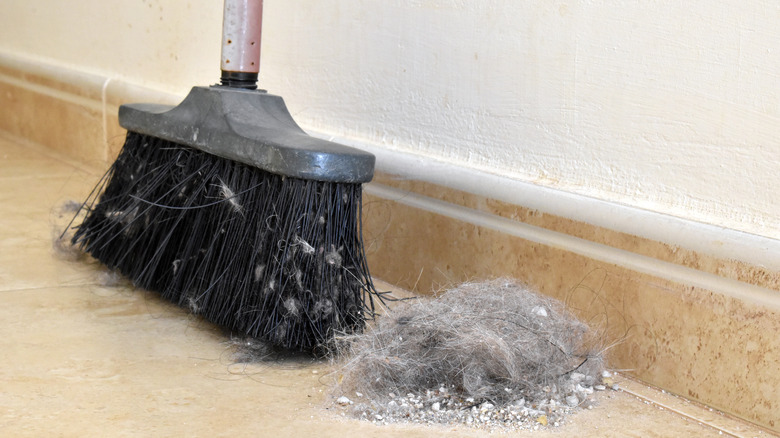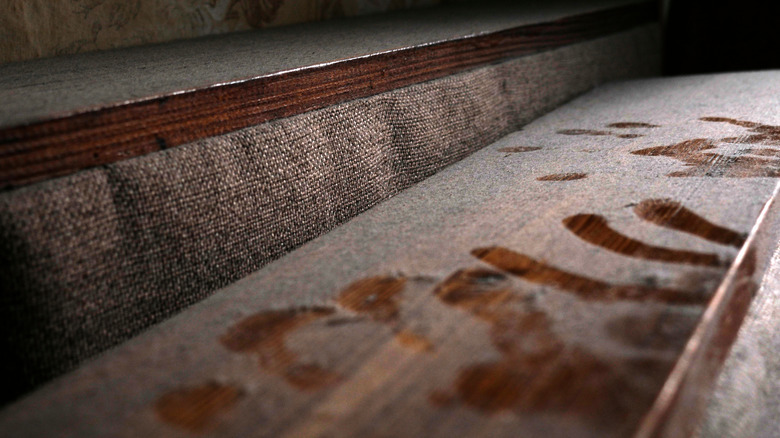This Is What Happens When You Stop Dusting
When it comes to cleaning, dusting in particular can feel uniquely taxing. Dust can hide in the smallest of crevices around the house, and while a vacuum can effectively suck up dust, using a feather duster can stir up a cloud of dust right into the air. Is a quick swipe of the hand across a tabletop enough to do away with dust? And as for those smaller nooks, can dust just be left out of sight and out of mind?
Although virtually weightless, dust can be made up of any number of components. Having conducted numerous studies on dust, University of Toronto professor Miriam Diamond tells USA Today that dust can consist of hair, dead skin, insect parts, particles from cleaning products, and even lead-based paint chemicals. While dust may be out of sight and out of mind for adults, young infants may be coming in contact with it at eye-level on floors. According to Diamond, if one were to stop dusting for a year, they would be exposing themselves to a host of bacteria.
The health risks of dust particles
A 2021 survey conducted by Harris Poll in partnership with Swiffer found that the number of adults in the U.S. between the ages of 18 and 75 who were not concerned with dusting landed between 63% to 73% depending on generation (via American Lung Association). According to the National Center for Healthy Housing, dust can be made up of indoor and outdoor components, the buildup of which can lead to breathing problems, allergic reactions, and asthma.
As per Western Australia's Department of Health, the dust we see on furniture is made up of larger, heavier particles, while smaller particles can remain and move through the air for longer periods of time. Particles so tiny that they can't be seen to the eye can wind up deep in the lungs or right into the bloodstream. Such inhalation can be particularly harmful if particles from chemical products are being absorbed (via USA Today).
How often you should be dusting
Of all the gross things that can be found in dust, microscopic pests are among them. Dust mites feed on dead skin, of which humans can shed as much as 1.5 grams daily — a buffet that can satisfy one million dust mites and prompt allergic reactions in humans (via Asthma & Allergy Foundation of America).
To safeguard our health, regular dusting is important. According to cleaning service company The Cleaning Club, certain household items should be dusted more frequently than others. For example, coffee tables, lamps, and dining tables can be wiped down once a week, while televisions, bedrooms, ceiling fans, blinds, and doors can get hit roughly every two weeks. Harder to reach places like crown molding, curtains, and the tops of high shelves can be dusted every three to six months. Dusting frequency should increase if you have pets or extreme shedders in your family. Cleaning experts also stress the importance of using a damp or microfiber cloth, vacuum cleaner, or Swiffer duster to dust as opposed to a standard feather duster.



